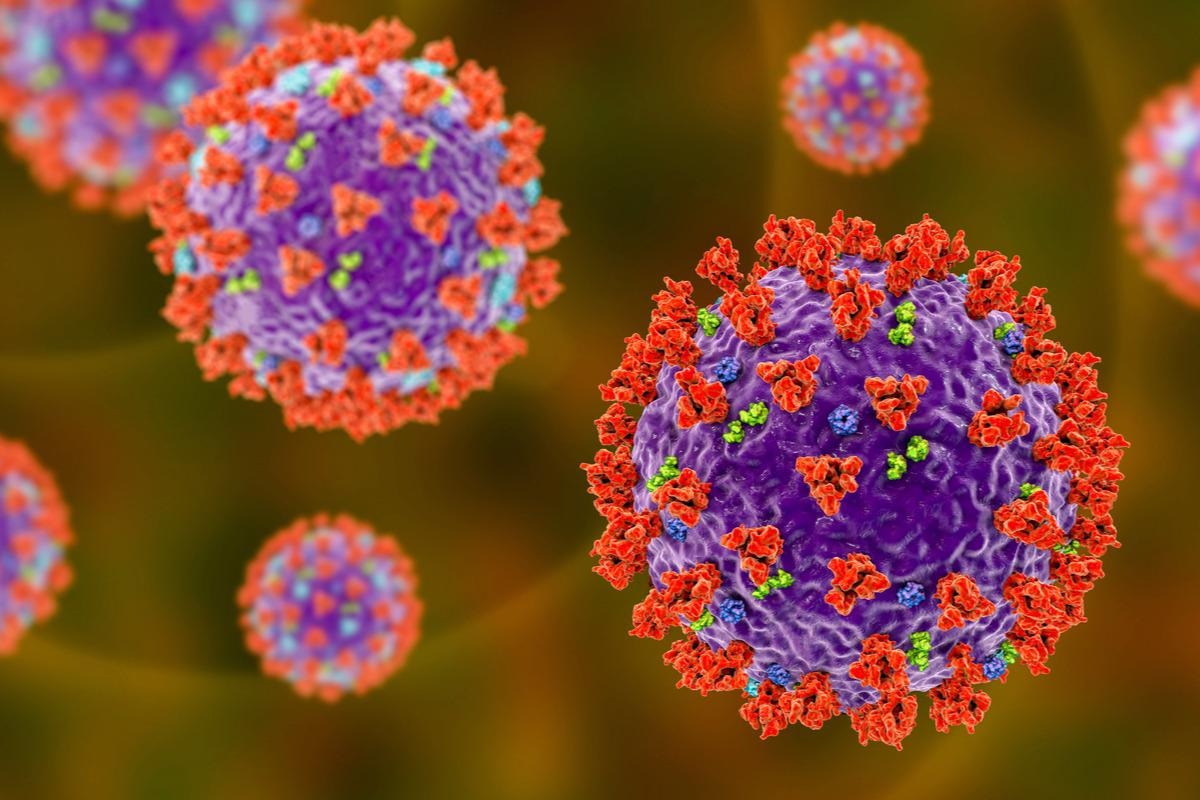The main causative agent of the ongoing coronavirus disease 2019 (COVID-19) is severe acute respiratory syndrome coronavirus-2 (SARS-CoV-2). Scientists have stated that it is imperative to understand the main epidemiological parameters of this virus to formulate strategies to mitigate its spread.
 Study: The unmitigated profile of COVID-19 infectiousness. Image Credit: Kateryna Kon
Study: The unmitigated profile of COVID-19 infectiousness. Image Credit: Kateryna Kon
Background
A key epidemiological parameter that decides the transmission rate of a virus is the generation interval, i.e., the period between the infection of the infector (first case) and the infectee (secondary case). It is difficult to infer generation intervals because confirming the exact time of infection is not an easy task.
In this context, for determining generation interval for an emerging infectious disease, researchers typically depend on the incubation period (the time between infection with the virus and the onset of symptoms) and the serial interval (the time between the onset of symptoms of the infector and infectee).
Previous studies have revealed that these epidemiological factors vary across hosts and transmission conditions. This is the reason why epidemiological parameters are described as distributions and not fixed values.
Generally, in an ongoing pandemic, the transmission rate or if the spread of the virus has been controlled is determined by studying the generation-interval distribution. At the population level, generation interval is characterized via the reproduction number (R) of the virus.
Short generation intervals caused by presymptomatic COVID-19 transmission challenge the effectiveness of various mitigation strategies, such as quarantine, contact tracing, and testing.
As stated above, generation interval and serial-interval distributions can change in accordance with the behavior of the population. For example, following various non-pharmaceutical strategies like social distancing and isolation prevents further transmission of the virus.
A new study
A new study, published on the medRxiv* preprint server, has focused on estimating the temporal dynamics of transmissibility of infected cases in the absence of intervention measures (unmitigated generation interval). This estimation is extremely important because it reflects upon the effectiveness of mitigation policies in the absence of other interventions. However, such estimation is a challenging task as symptomatic individuals may self-isolate and prevent transmission.
The authors tackled this issue by applying a strict data curation procedure, i.e., they considered transmission events that occurred before implementing major mitigation measures and before awareness of the COVID-19 became widespread. To date, researchers have not considered factors, such as contact tracing and case isolation, to estimate the generation-interval distribution.
In this study, scientists measured generation-interval and incubation-period distributions by considering all serial intervals in the transmission pair dataset. Many studies are available that evaluate the generation interval, but some major methodological issues could lead to significantly biased results in such studies.
In the present study, researchers combined all available transmission data associated with the initial COVID-19 outbreak when mitigation policies were minimum and were able to assemble transmission-pair data from 12 datasets. Subsequently, they conducted statistical studies to infer the major sources of bias in estimating the generation interval distribution.
Findings
Researchers found that the effects of mitigation steps and awareness-driven behavior have significantly influenced COVID-19 transmission in the late stage of the infection. Not including these sources resulted in underestimation of the generation-interval distribution.
Scientists revealed that mitigation strategies reduced the amount of post-symptomatic transmission and increased the fraction of presymptomatic transmission. These results were validated using the onset of symptoms to transmission (TOST).
The current study reported a median generation interval of 7.9 days and an average of 9.7 days, implying that the infection period is much longer than previously assumed.
Limitations
One of the major limitations of this study is that the datasets used for analysis were obtained from previously published studies.
Also, transmission pair data tend to be inappropriate for identifying the direction of transmission, especially when presymptomatic transmission causes infectors to develop symptoms after their infectees, which makes it difficult to determine who infected whom.
The authors addressed these biases via a bootstrapping approach, where some data points are omitted in each bootstrap sample.
Additionally, sensitivity analyses were performed to address some important biases, for example, assessing the period associated with the unmitigated transmission, considering long serial intervals in the dataset, etc.
These analyses revealed that although biases could reduce the inferred generation interval distribution, the primary conclusions regarding the long unmitigated generation intervals remained robust.
Conclusion
Scientists stated that the estimates presented in the current study could help in the formulation of quarantine policy. This study indicates that individuals released from quarantine at day 14 are still capable of transmitting SARS-CoV-2.
In the future, the methodology developed in this study could help estimate the generation interval of the newly emerging SARS-CoV-2 variants that show altered transmission dynamics.
*Important Notice
medRxiv publishes preliminary scientific reports that are not peer-reviewed and, therefore, should not be regarded as conclusive, guide clinical practice/health-related behavior, or treated as established information.
-
Sender, R. et al. (2021) The unmitigated profile of COVID-19 infectiousness. medRxiv. doi: https://doi.org/10.1101/2021.11.17.21266051 https://www.medrxiv.org/content/10.1101/2021.11.17.21266051v1
Posted in: Medical Science News | Medical Research News | Disease/Infection News
Tags: Coronavirus, Coronavirus Disease COVID-19, Pandemic, Reproduction, Respiratory, SARS, SARS-CoV-2, Severe Acute Respiratory, Severe Acute Respiratory Syndrome, Syndrome, Virus

Written by
Dr. Priyom Bose
Priyom holds a Ph.D. in Plant Biology and Biotechnology from the University of Madras, India. She is an active researcher and an experienced science writer. Priyom has also co-authored several original research articles that have been published in reputed peer-reviewed journals. She is also an avid reader and an amateur photographer.
Source: Read Full Article
